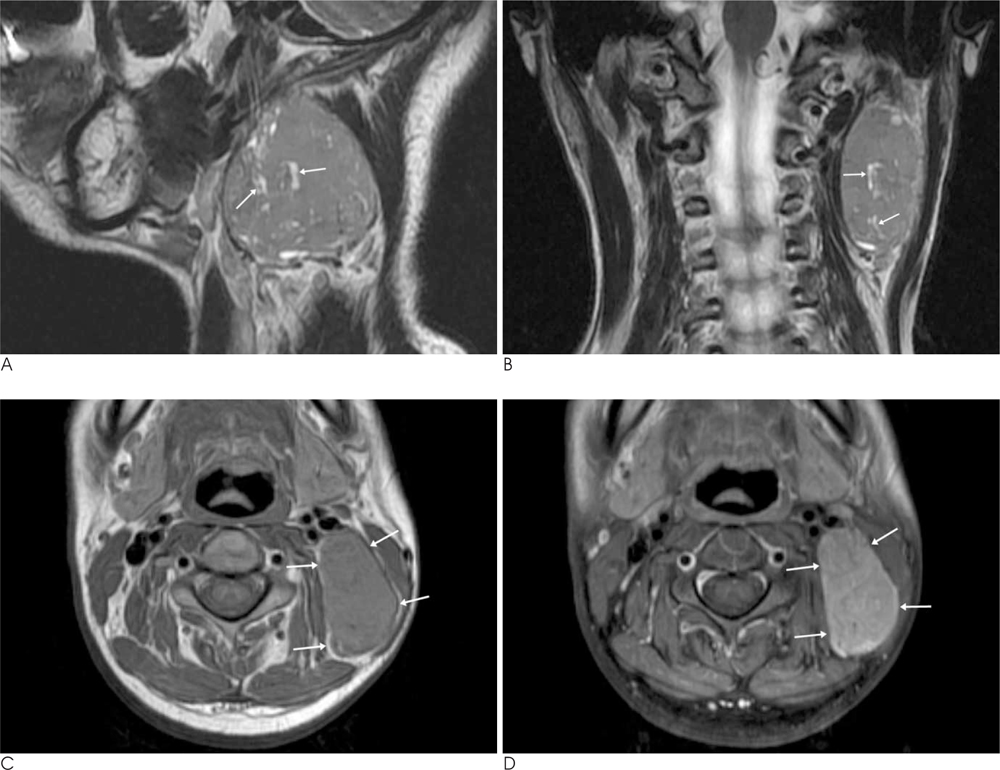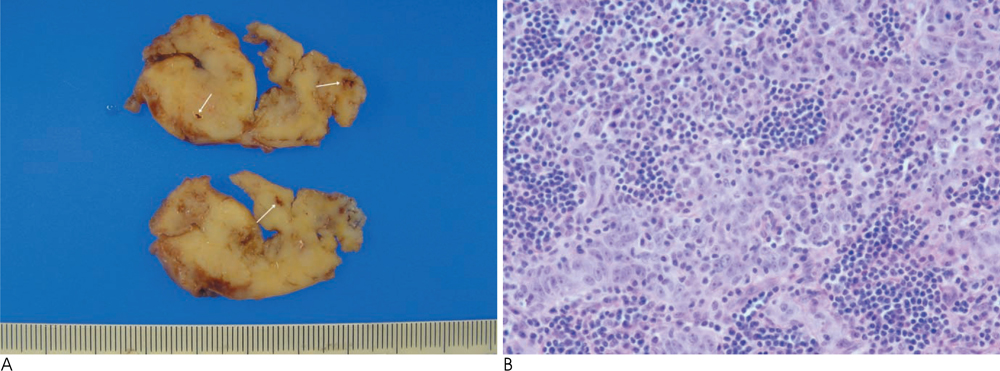J Korean Soc Radiol.
2010 Dec;63(6):491-494.
MR Imaging of Lymphoepithelial Carcinoma in the Posterior Cervical Space: A Case Report
- Affiliations
-
- 1Department of Radiology, Eulji General Hospital, Eulji University School of Medicine, Seoul, Korea. kwchung99@eulji.ac.kr
- 2Department of Anatomic Pathology, Eulji General Hospital, Eulji University School of Medicine, Seoul, Korea.
Abstract
- Lymphoepithelial carcinoma is a rare category of malignant neoplasm that consists of undifferentiated malignant epithelial cells admixed with lymphocytes. Lymphoepithelial carcinoma predominantly occurs in the upper aero-digestive tract and only few cases of metastasis in the posterior cervical space have currently been reported. We report here on a case of lymphoepithelial carcinoma in the posterior cervical space.
Figure
Reference
-
1. Mills SE, Fechner RE. The nose, paranasal sinuses and nasopharynx. Diagnostic surgical pathology. 3nd ed. New York: Lippincott Williams & Wilkins;1999. p. 885–924.2. Chan JKC, Bray F, McCarron P, Foo W, Lee AWM, Yip T, et al. Tumours of the nasopharynx: Nasopharyngeal carcinoma. In : Bames L, Eveson JW, Reichart P, Sidransky D, editors. Pathology and genetics of head and neck tumours: WHO classification of tumours. Lyon: IARC Press;2005. p. 83–97.3. Wassef M, Le Charpentier Y, Monteil JP, Le Tien K, Galian A. Undifferentiated carcinoma with lymphoid stroma (undifferentiated carcinoma nasopharyngeal type): optical, electron microscopical and immunofluorescence study. Bull Cancer. 1982; 69:11–21.4. Haas I, Hoffmann TK, Engers R, Ganzer U. Diagnostic strategies in cervical carcinoma of an unknown primary (CUP). Eur Arch Otorhinolaryngol. 2002; 259:325–333.5. Parker GD, Harnsberger HR. Radiologic evaluation of the normal and diseased posterior cervical space. AJR Am J Roentgenol. 1991; 157:161–165.6. Som PM, Curtin HD. Head and Neck Imaging. 4th ed. St Louis, Mo: Mosby-Elsevier Science;2003. p. 1824–1825.7. Sakai O, Curtin HD, Romo LV, Som PM. Lymph node pathology. Benign proliferative, lymphoma, and metastatic disease. Radiol Clin North Am. 2000; 38:979–999.8. Weber AL, Montandon C, Robson CD. Neurogenic tumors of the neck. Radiol Clin North Am. 2000; 38:1077–1090.9. Kaji AV, Mohuchy T, Swartz JD. Imaging of cervical lymphadenopathy. Semin Ultrasound CT MR. 1997; 18:220–249.
- Full Text Links
- Actions
-
Cited
- CITED
-
- Close
- Share
- Similar articles
-
- MR Imaging of Focal Cervical Edema Mimicking Carcinoma: A Case Report
- Three Cases of Lymphoepithelial Carcinoma
- A Case of Lymphoepithelial Carcinoma Originating in the Submandibular Gland
- Staging of uterine cervical carcinoma: comparison of CT and MR imaging
- Fine Needle Aspiration Cytology of Lymphoepithelial Carcinoma of Parotid Gland: A Case Report



